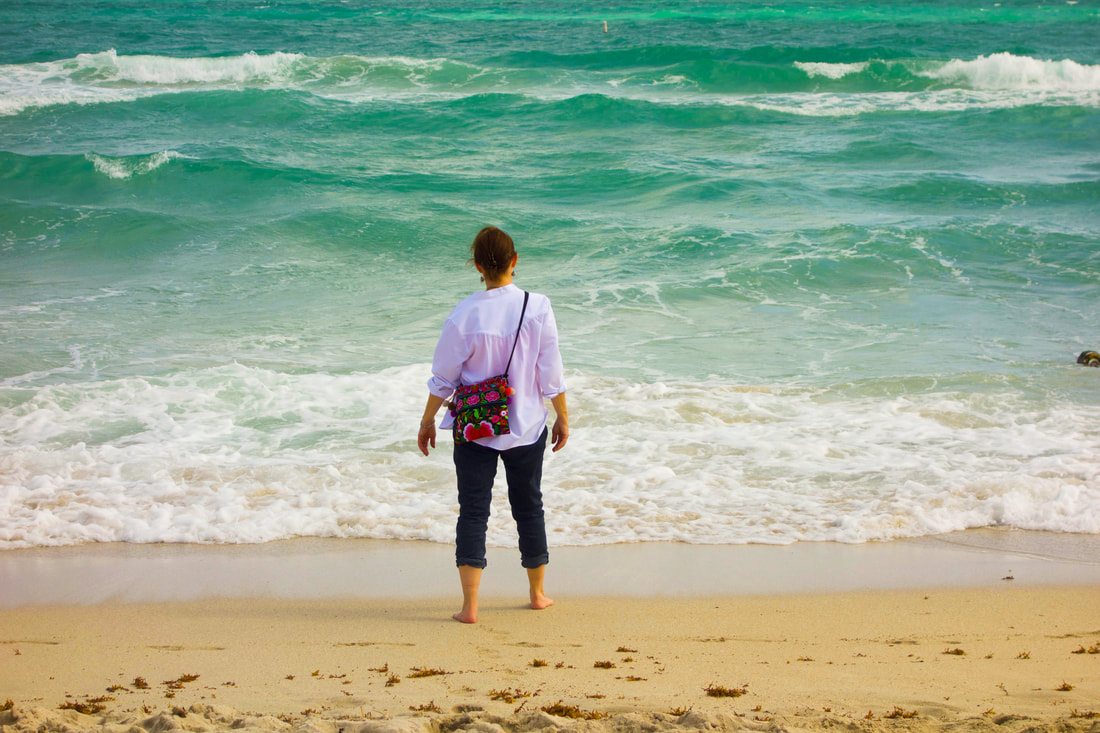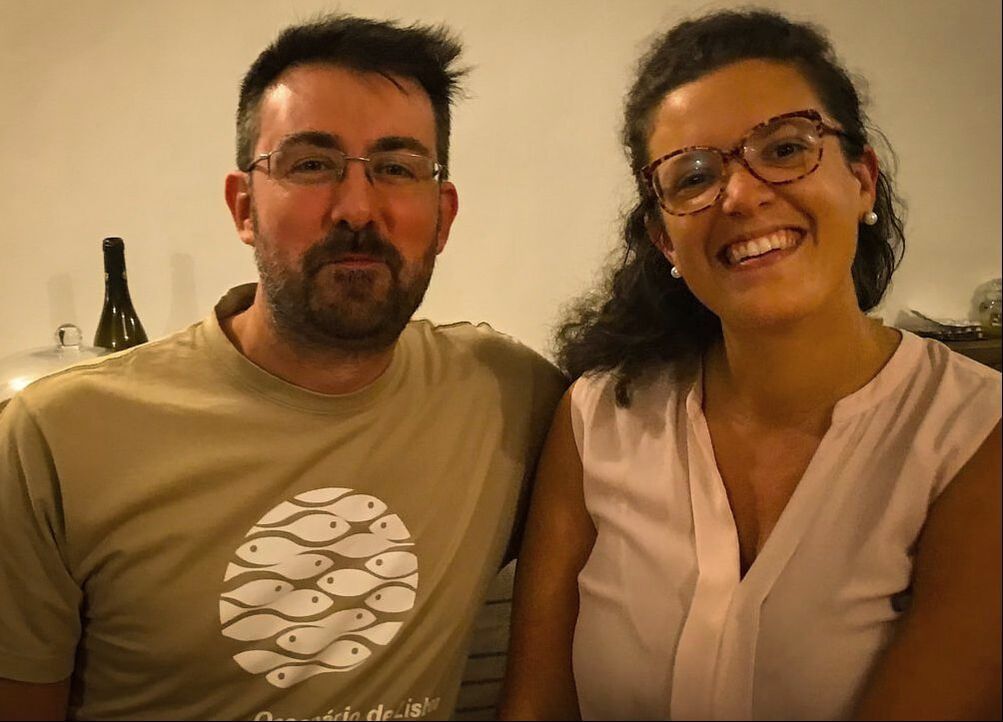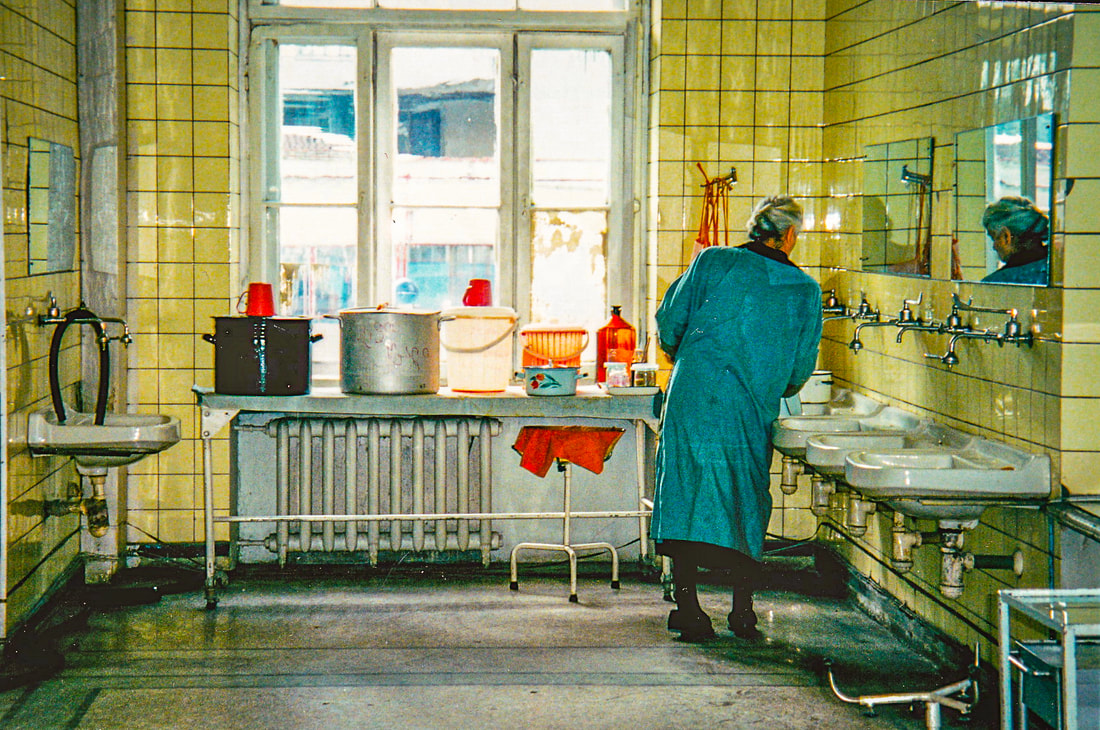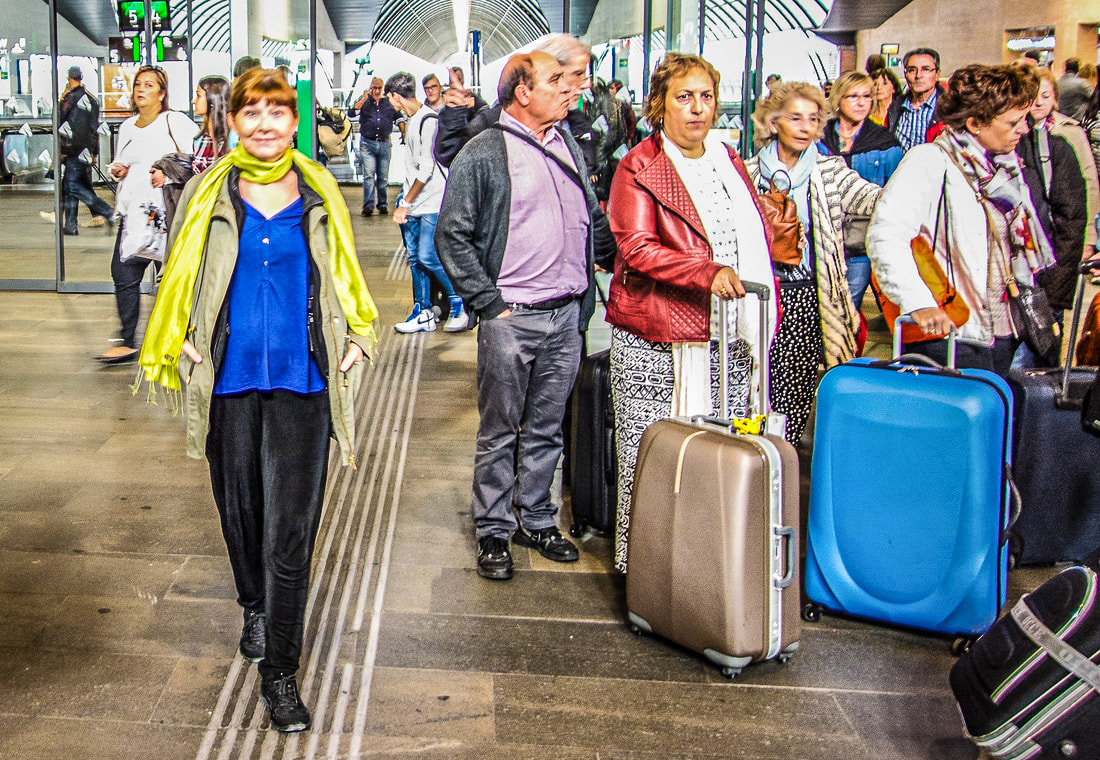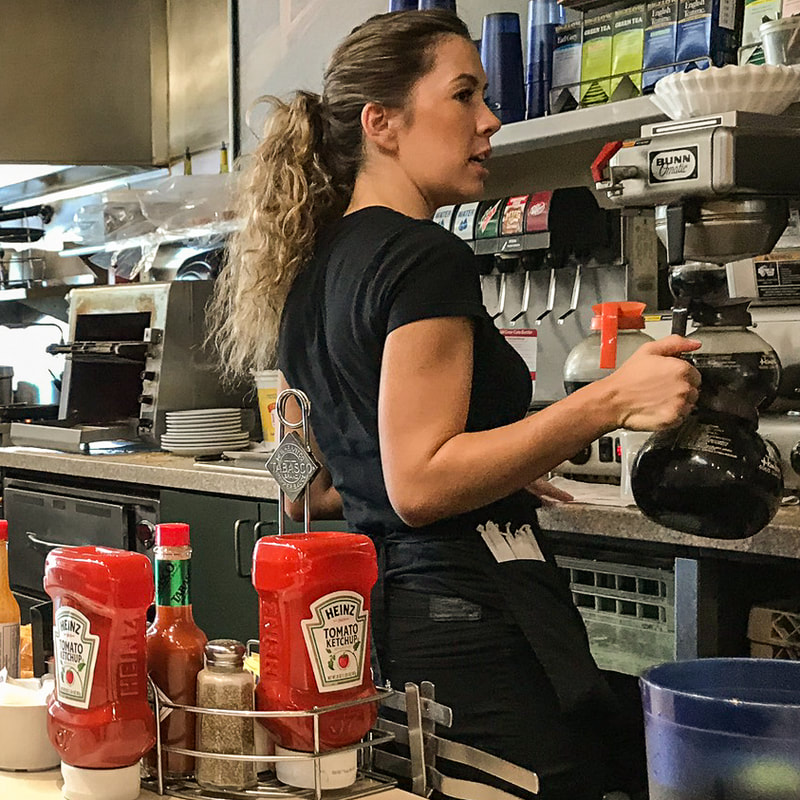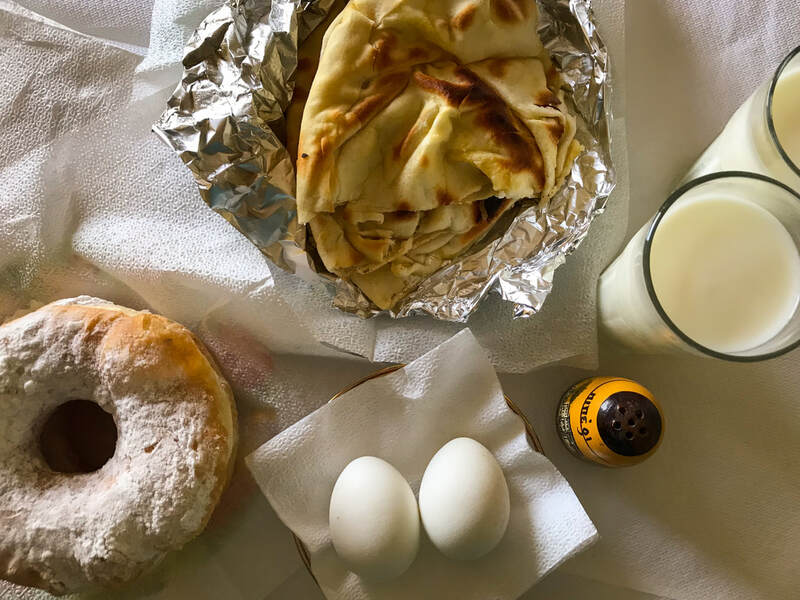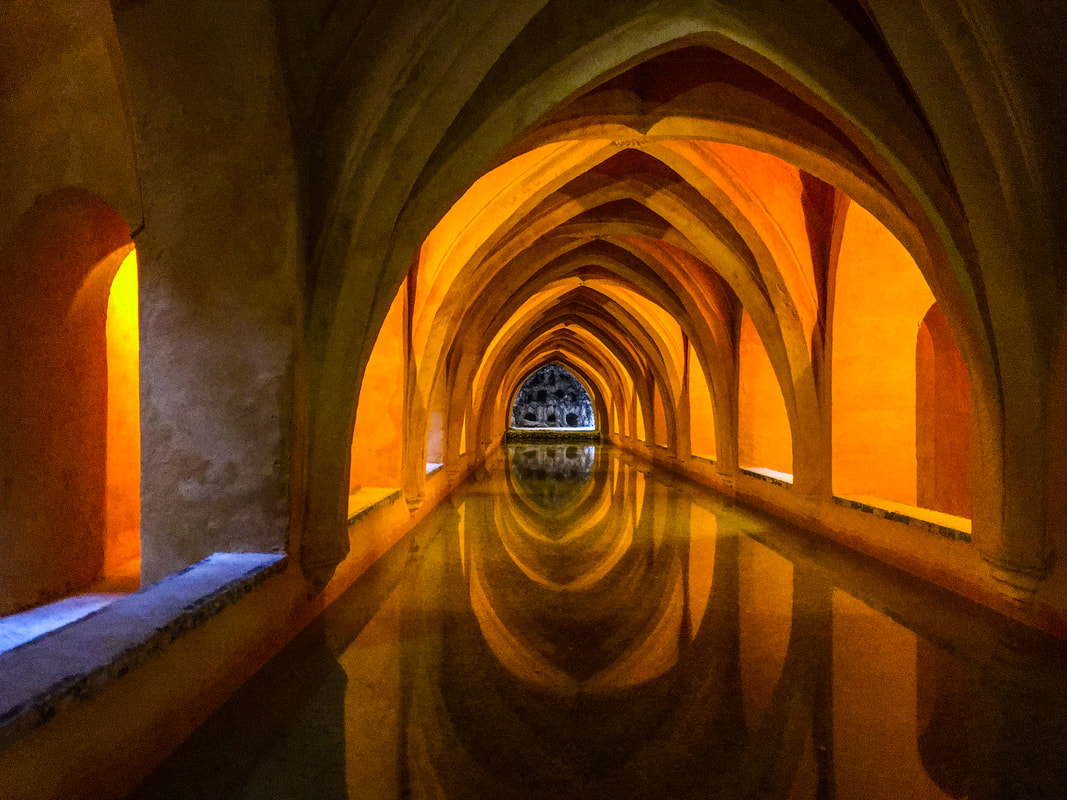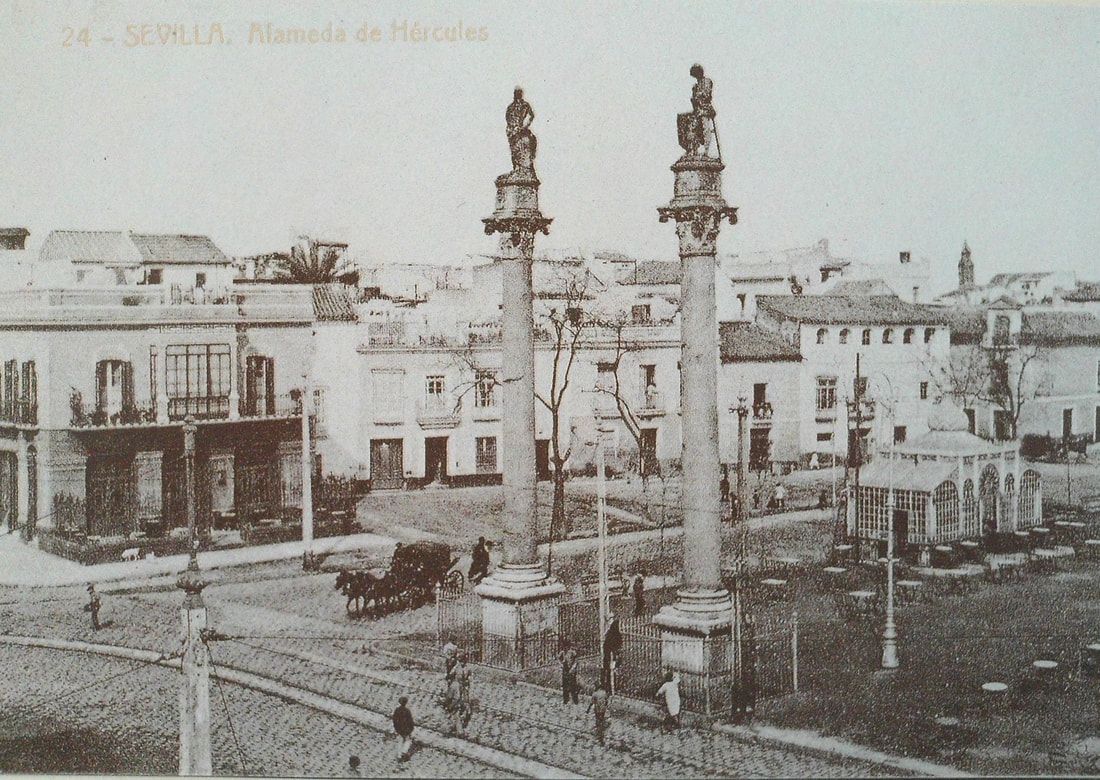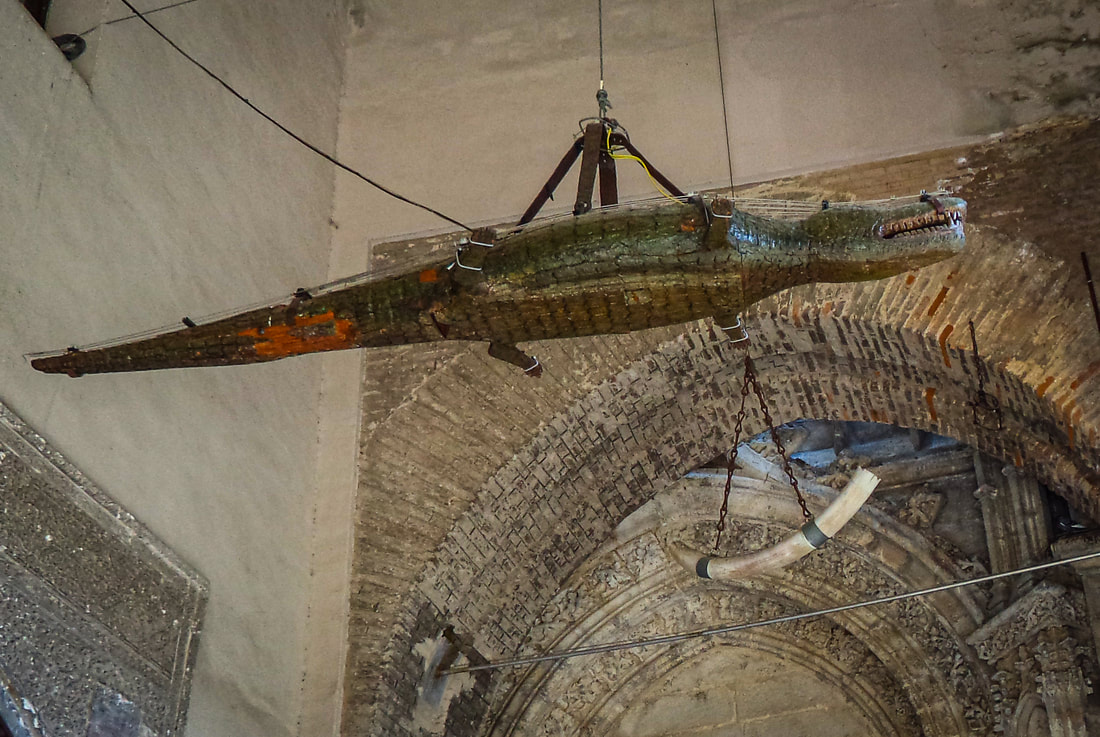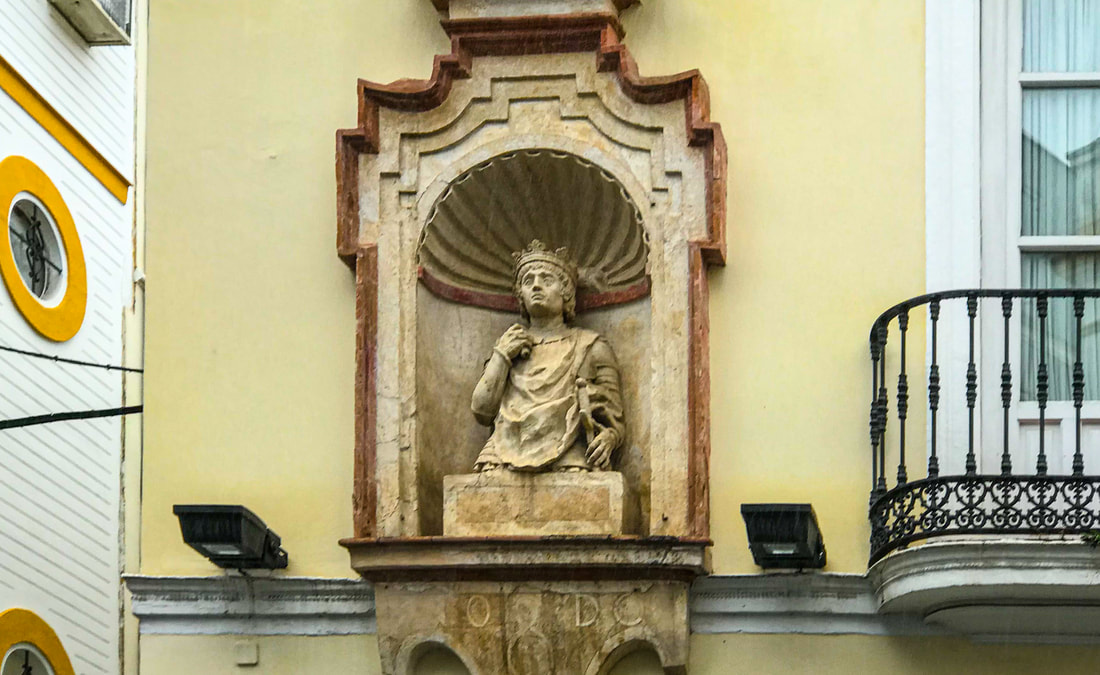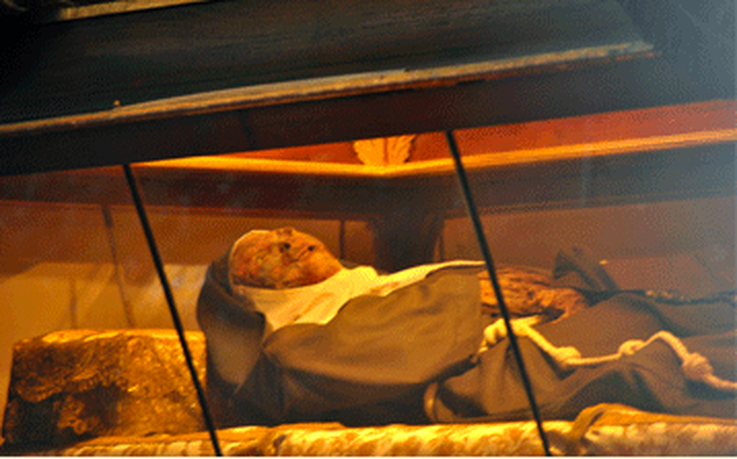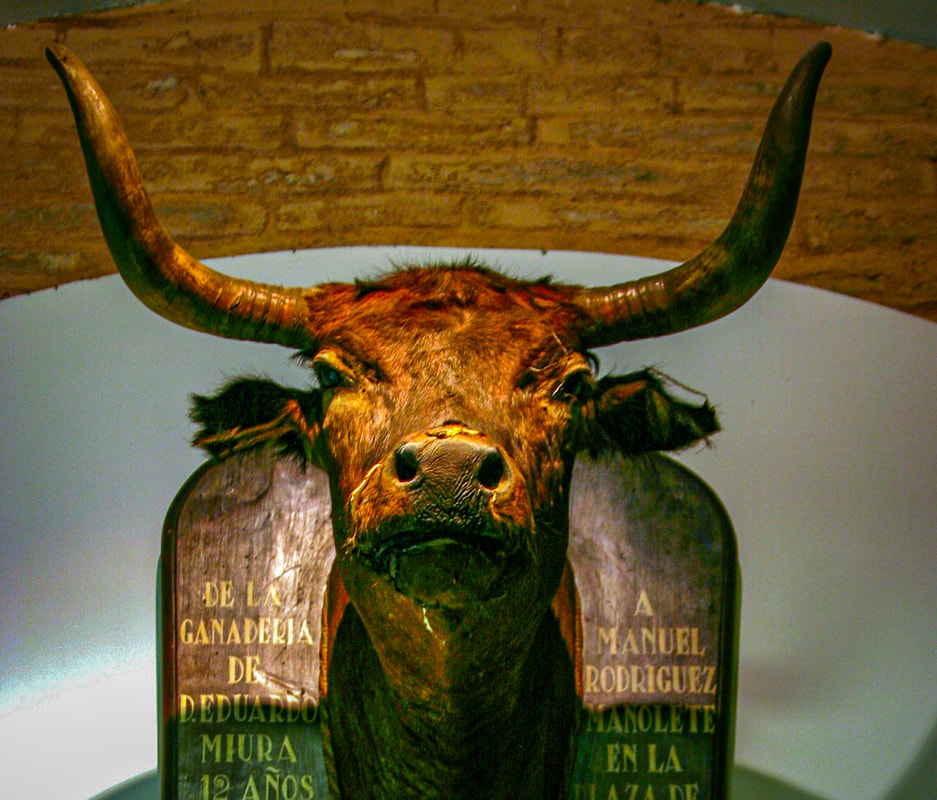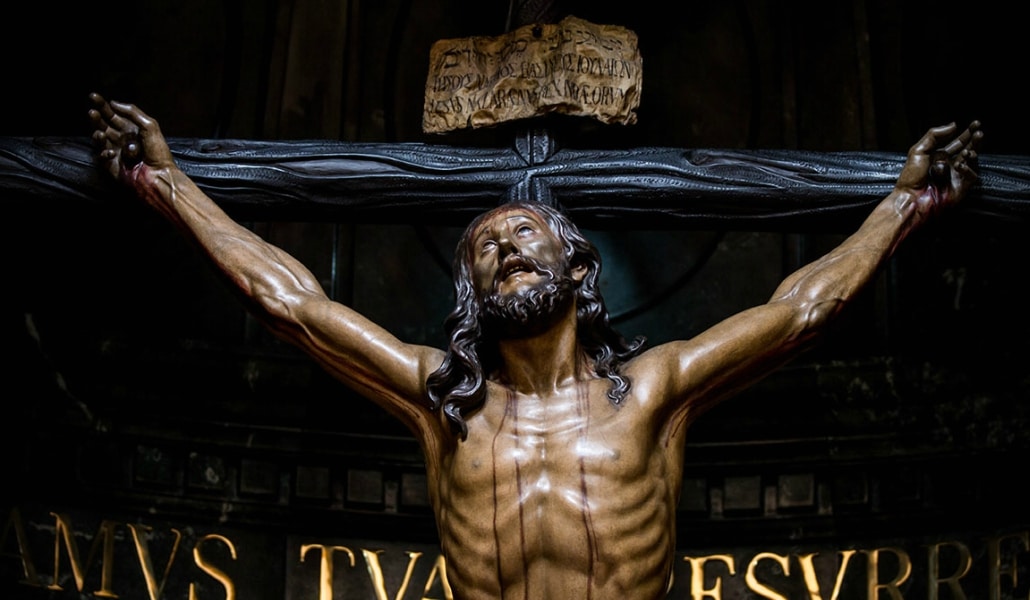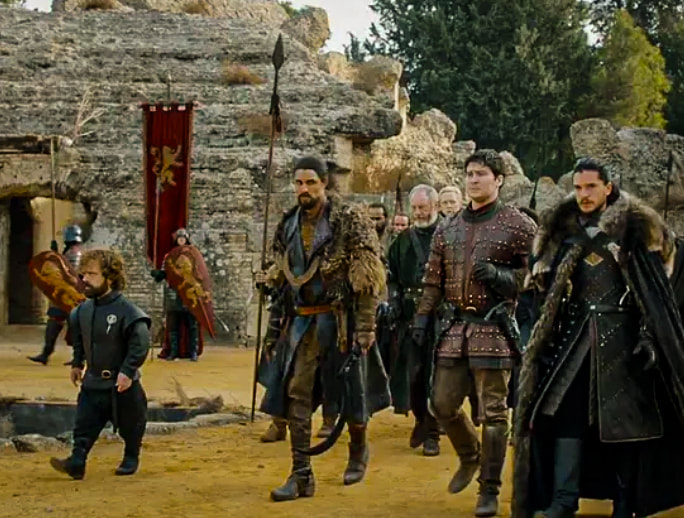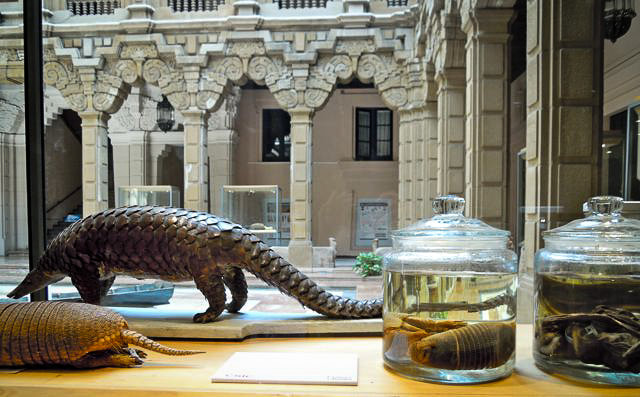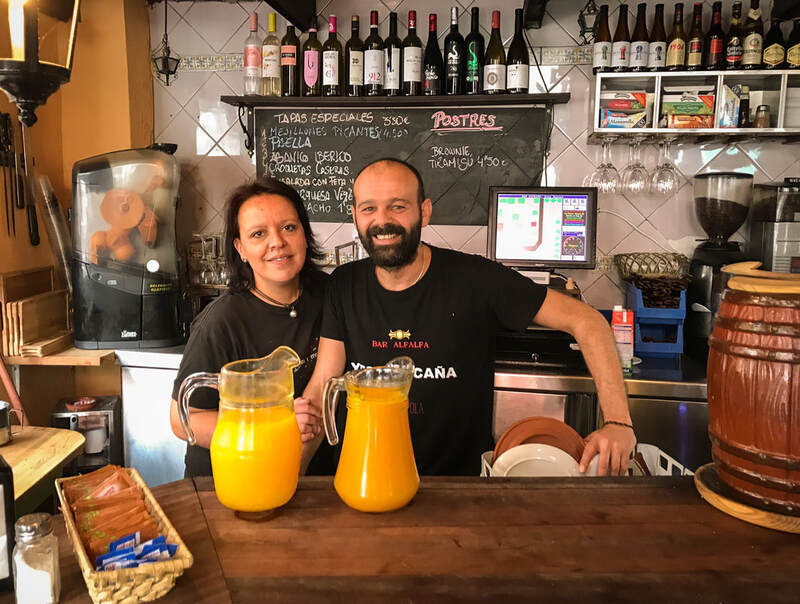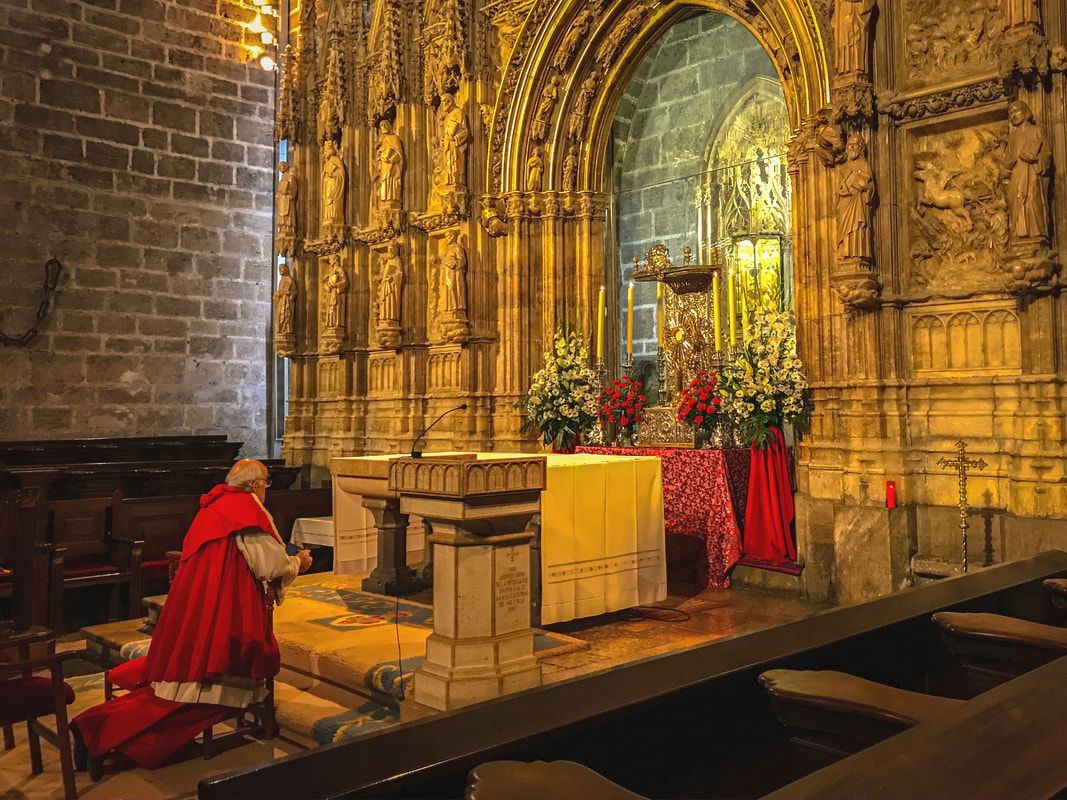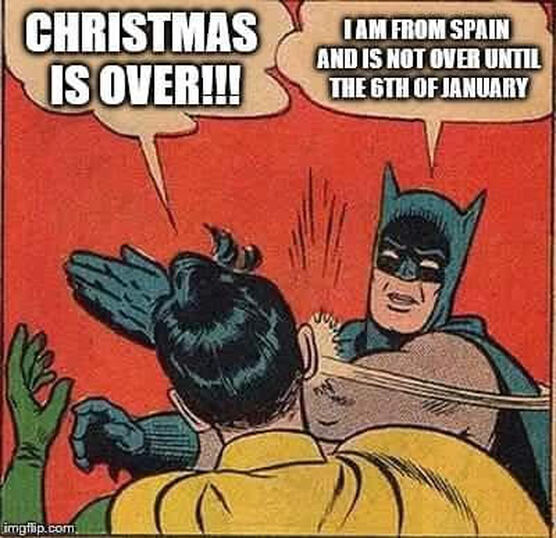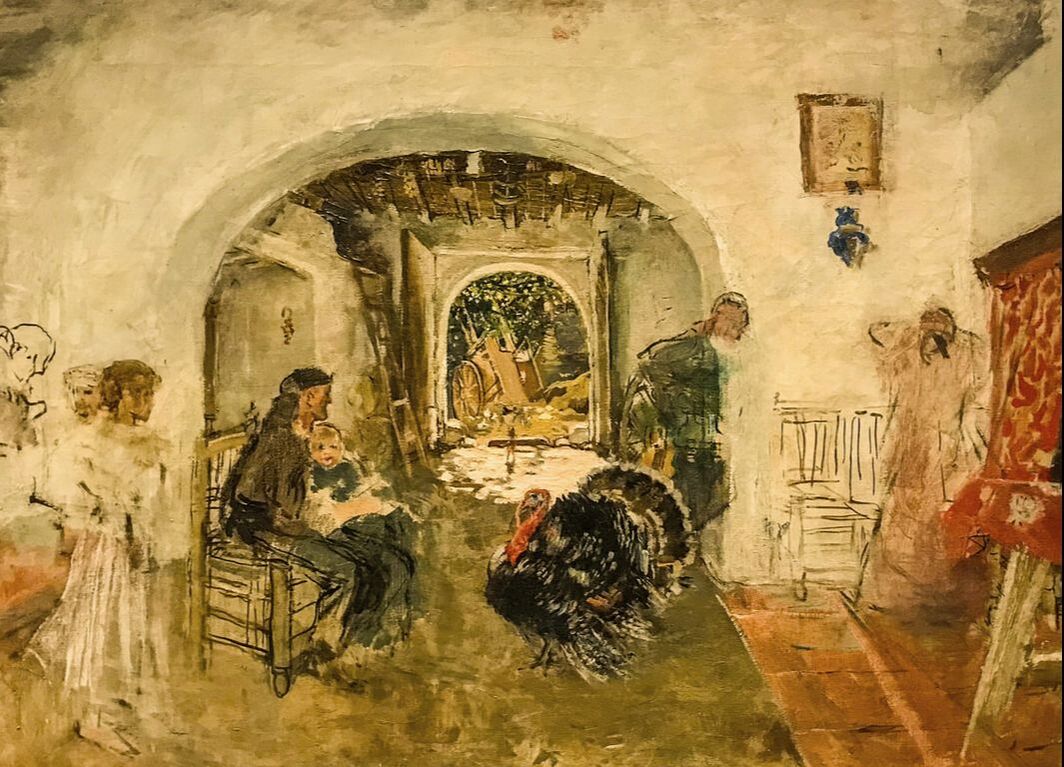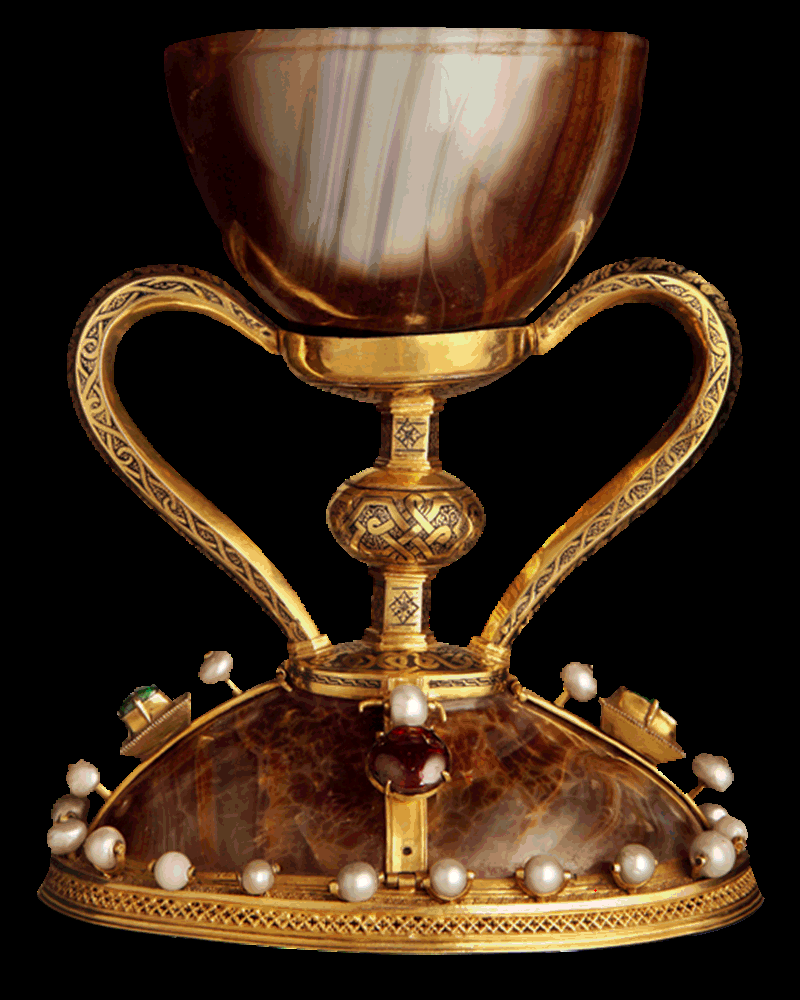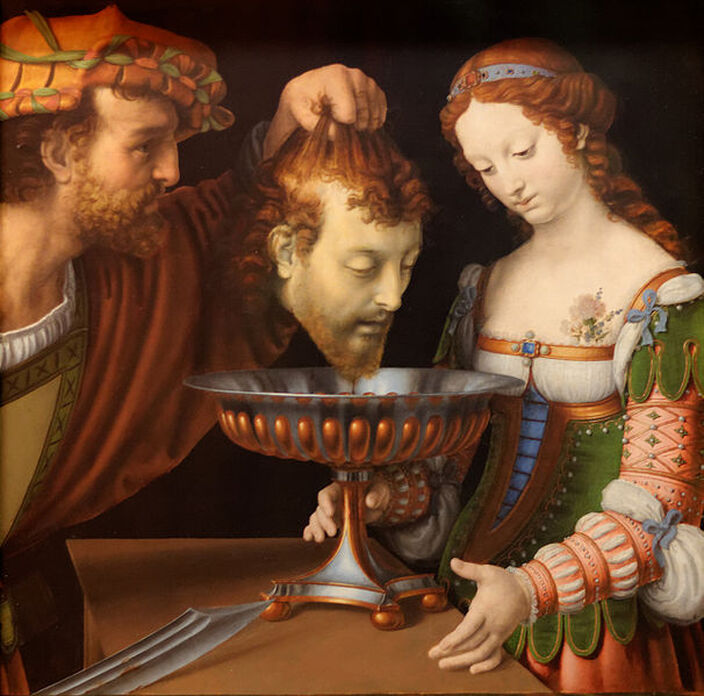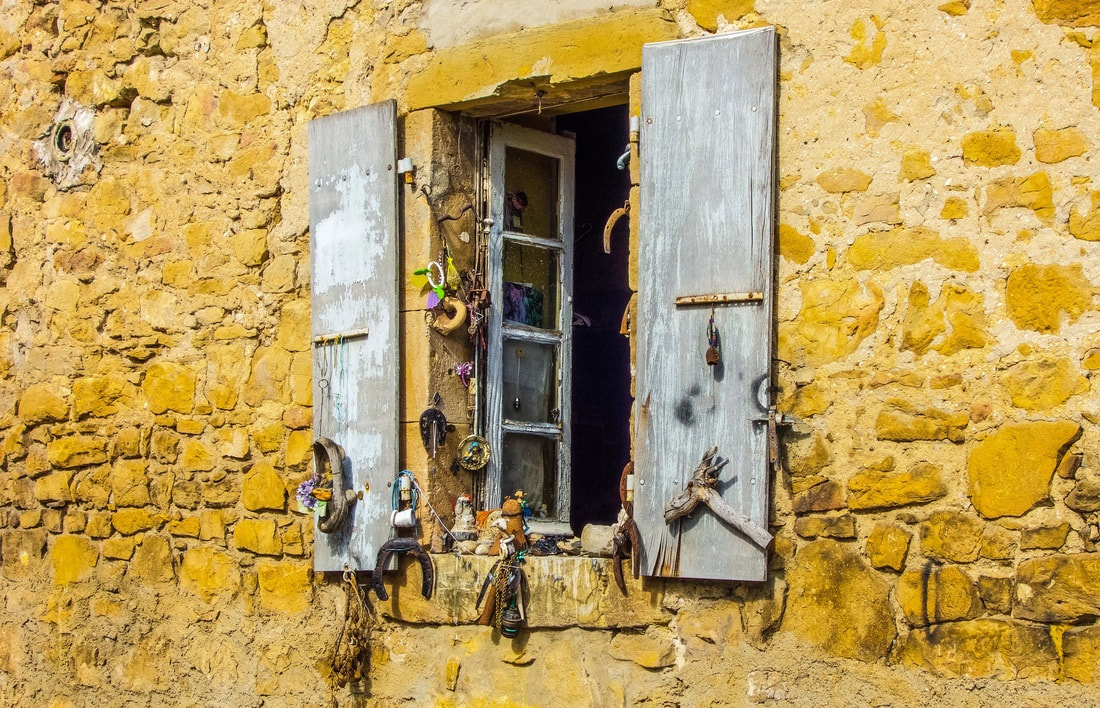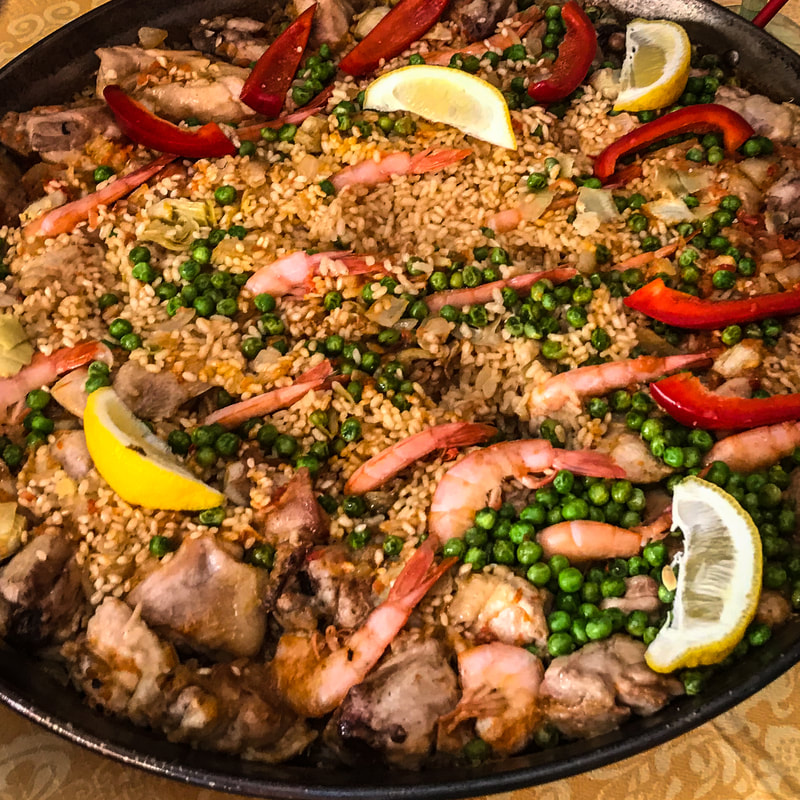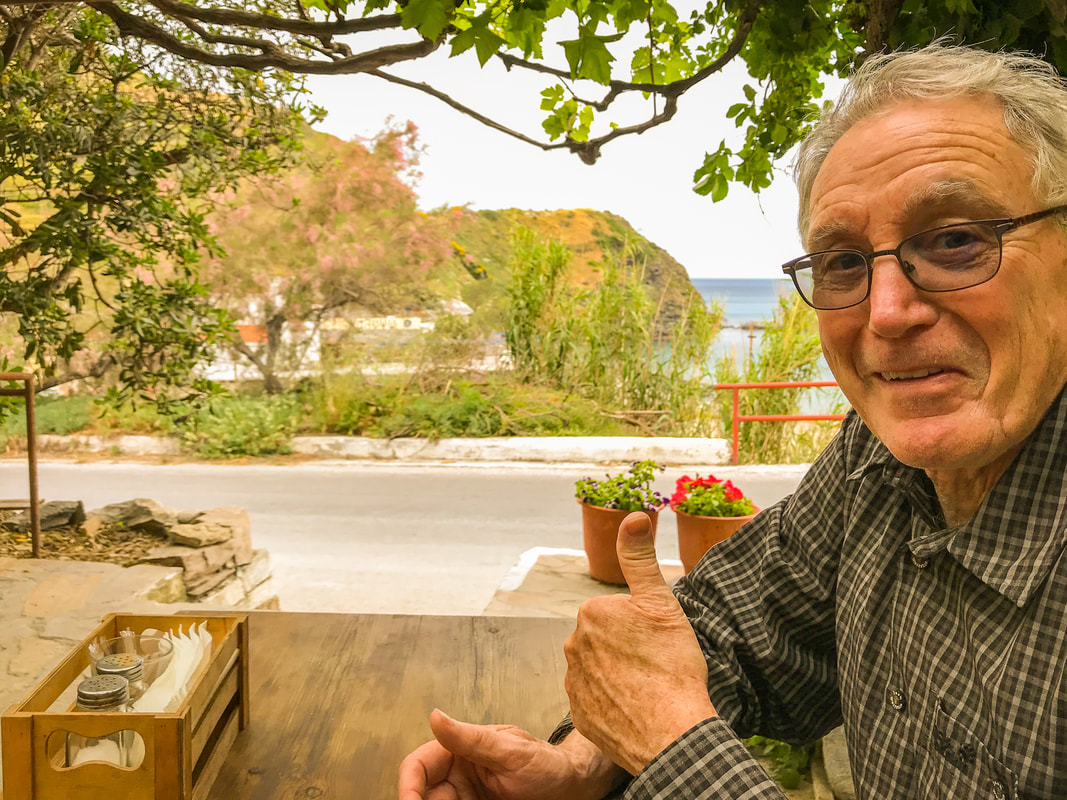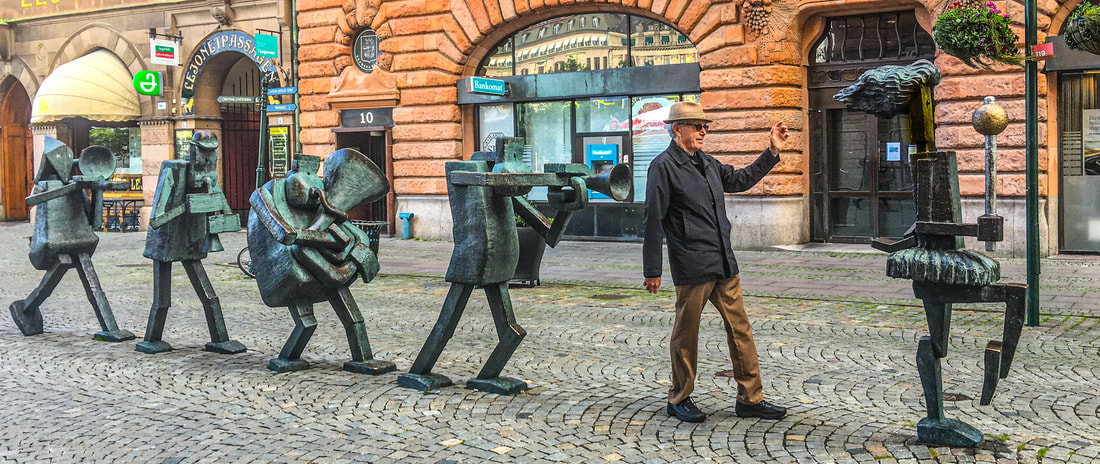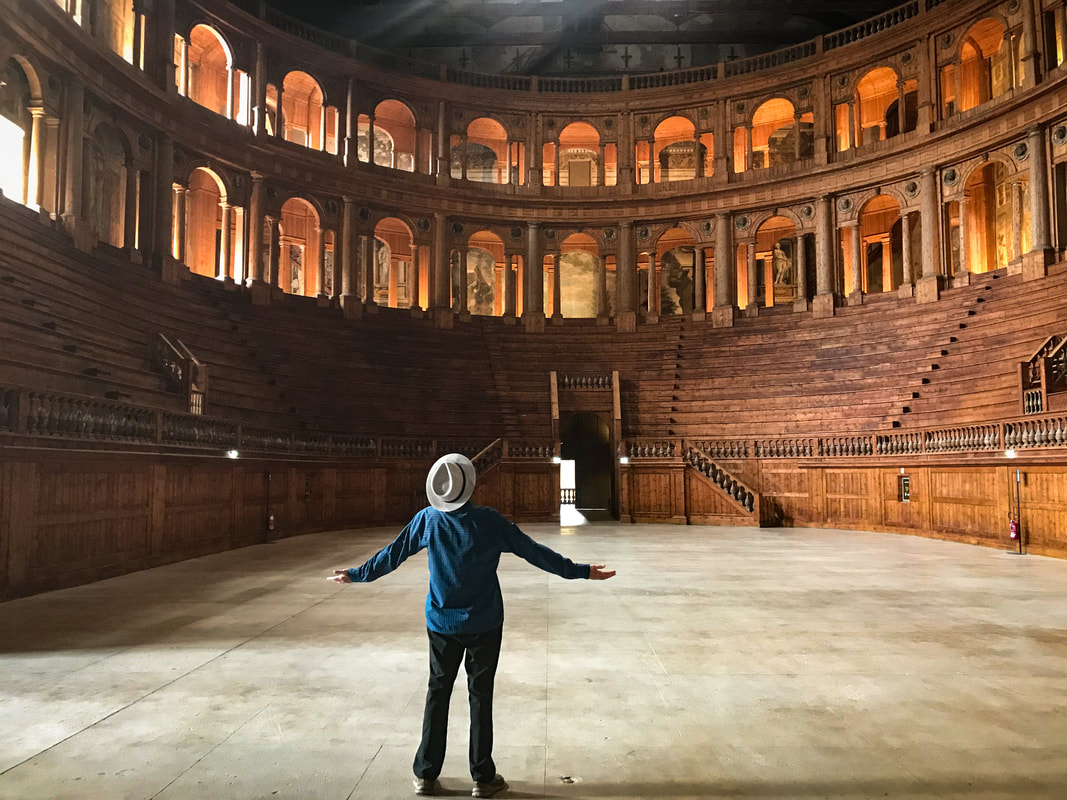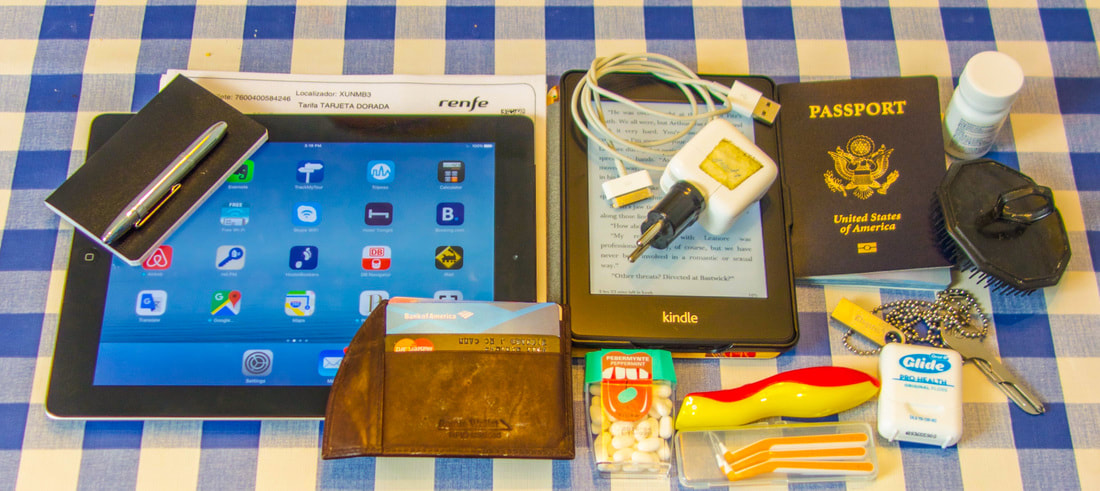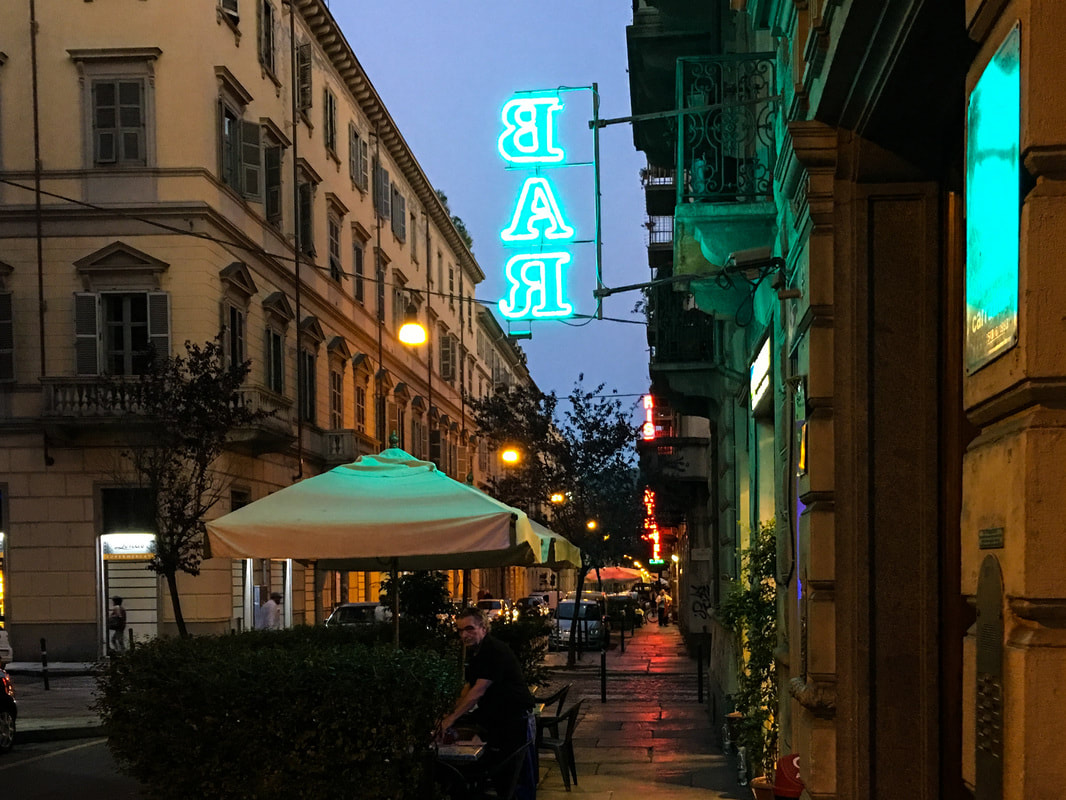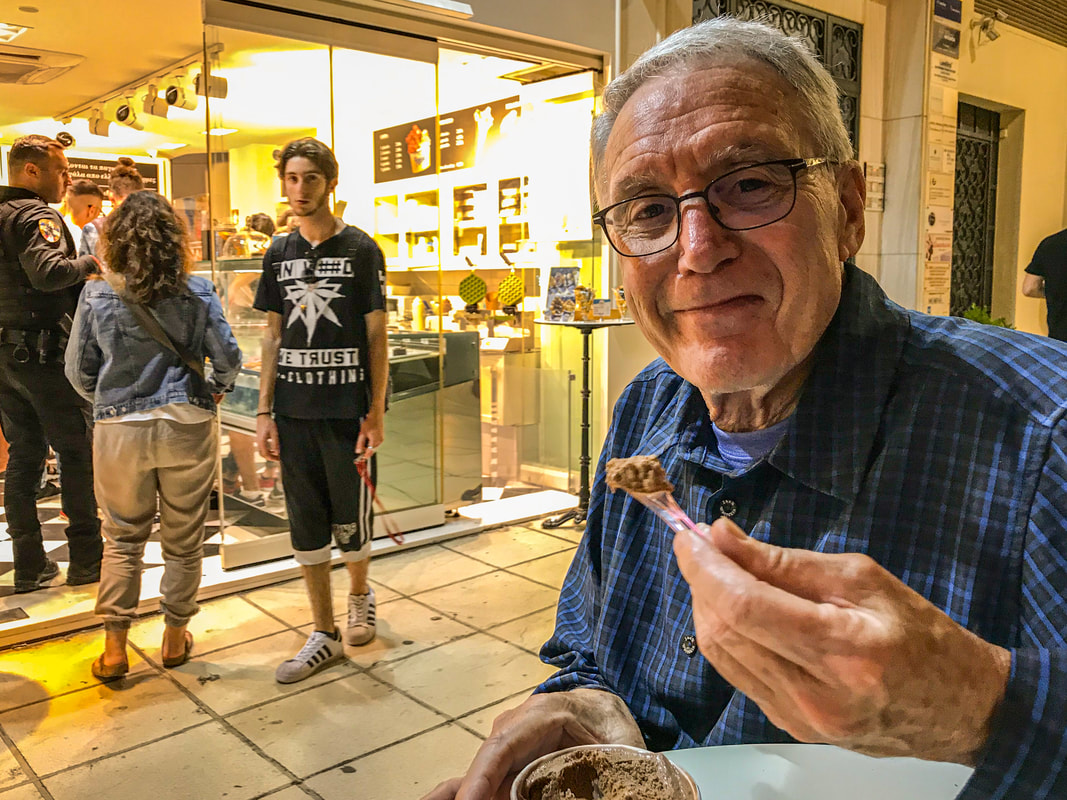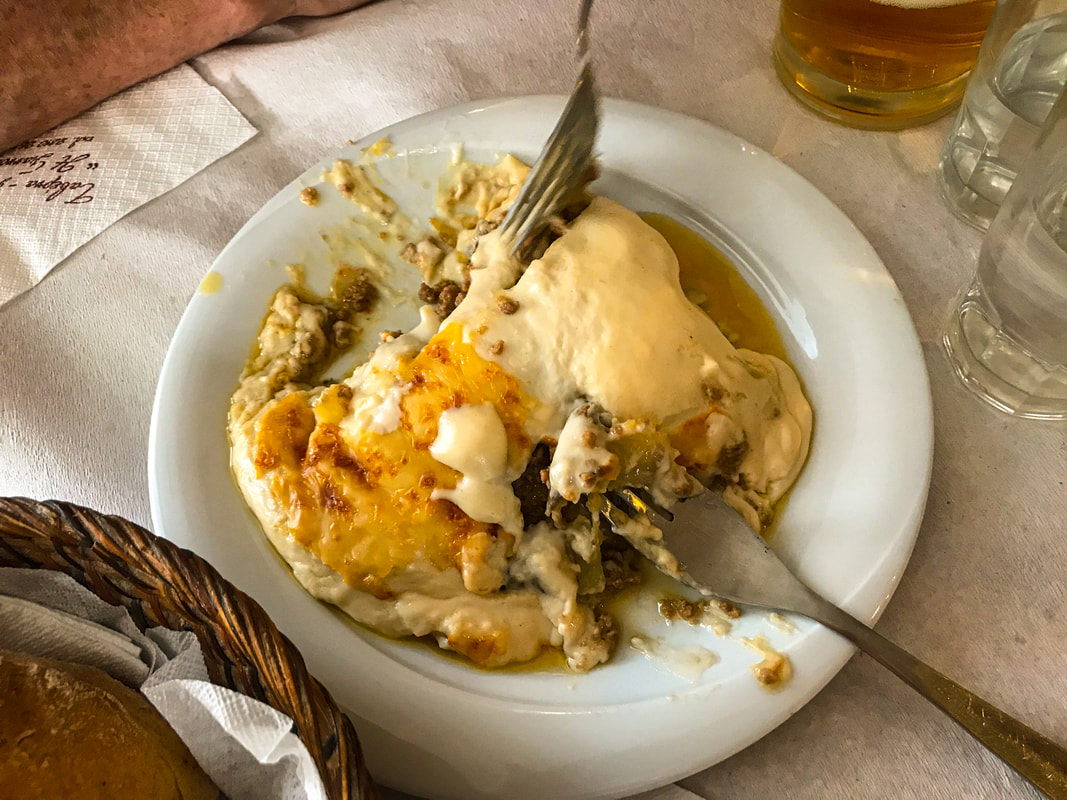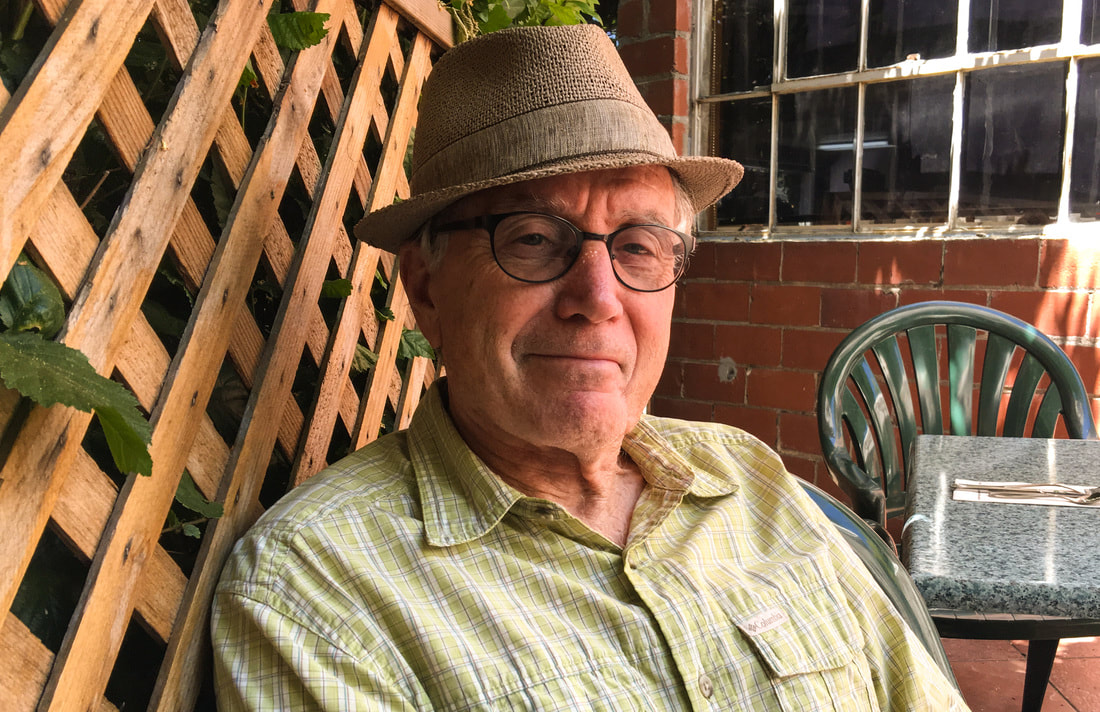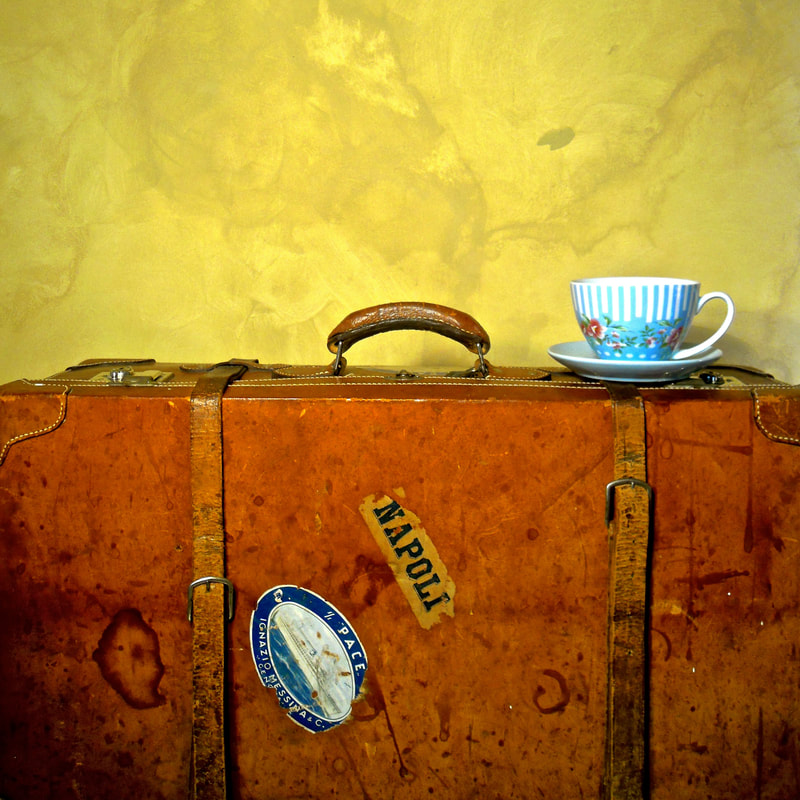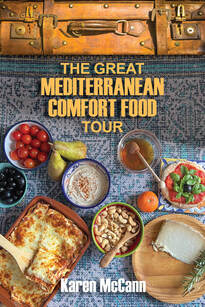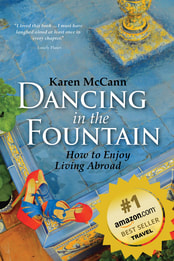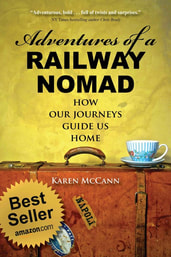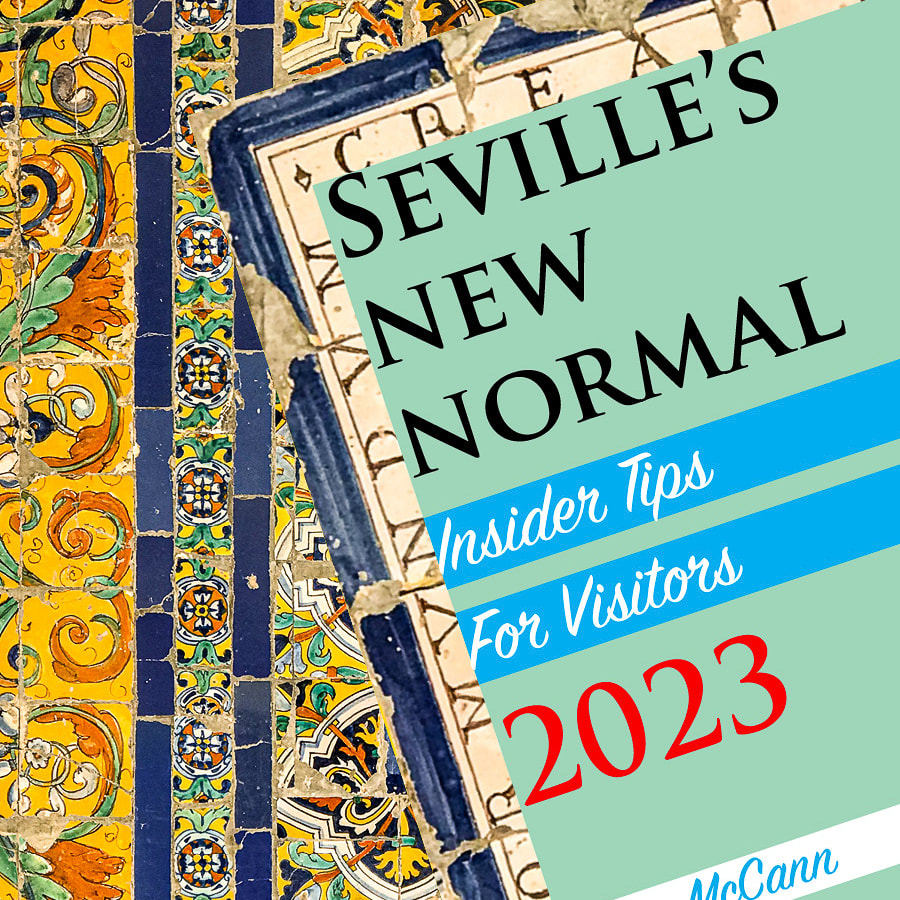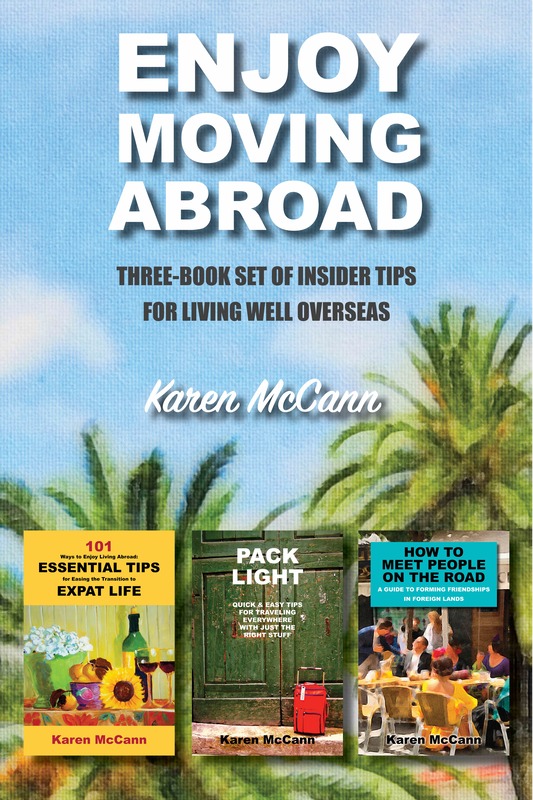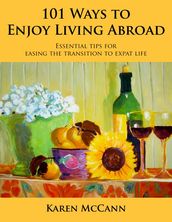|
“People say that what we're all seeking is a meaning for life.… I think that what we're seeking is an experience of being alive, so that our life experiences on the purely physical plane will have resonances with our own innermost being and reality, so that we actually feel the rapture of being alive.” Joseph Campbell For me, the true purpose of travel is to feel “the rapture of being alive” that Joseph Campbell talked about. In the chaos and haste of our everyday lives, we survive by falling back on habitual ways of thinking and doing. Leaving all that behind and venturing into the unknown on a physical level, we open our hearts and minds to the world in fresh and vigorous ways. That’s when our inner and outer perspectives begin to align, and we feel the first stirrings of joy. And this is where things get interesting. “The point of travel is to help us in our inner evolution,” says The Point of Travel video. “Every location in the world contains qualities that could support some kind of beneficial change inside a person.” Often that change is a simple one, such as feeling more rested or getting away from the office while we still cling to a few shreds of sanity and are able to refrain from throwing the stapler at the wall — or a colleague. In these uncertain times, we may need to refresh our souls by looking at objects of surpassing beauty that have endured for centuries so we can reconnect with our own resilience and sense of wonder On my journeys, the most powerful transcendent moments happen when I connect with people. And that happens far more easily when I am traveling with a purpose. What kind of purpose? That’s different for everyone, of course, and it certainly doesn't need to be anything too grand or complicated. You might want to learn a little conversational Spanish, do volunteer work, or visit some of the dive bars you frequented in your misspent youth. Whatever your goal, you’ll find having one opens doors and creates conversations you’d never expect. During last summer’s Mediterranean Comfort Food Tour, everyone I met wanted to tell me about the traditional dishes of their childhood. Cooks invited me into their kitchens, introduced me to their families, and shared stories, recipes, and dreams. One of the best ways to plunge into a culture is through work, whether paid or unpaid. Twenty-three years ago, Rich and I started volunteering with a couple of organizations that sent us to the Republic of Georgia, El Salvador, Kenya, Mexico, and Bosnia. Our goal was to provide basic business advice to struggling microenterprises. We’d spend weeks or months working with post-Soviet medical groups trying to navigate the transition to a capitalist system or assisting sewing collectives struggling to survive as cheap Chinese imports flooded into town. In the off hours, we’d get to know our hosts, their families, and their communities, enjoying many convivial evenings swapping stories and learning local drinking customs. The organizations that we worked for no longer have active volunteer programs, but there are plenty of others on the lookout for an extra pair of hands. For instance, Habitat for Humanity, which helps people in disadvantaged neighborhoods build new homes for their families, now operates in 70 countries. Last summer, Rich and I spent a day working at a soup kitchen in Athens operated by the worldwide Catholic relief organization Caritas. If you Google volunteer programs, you’ll find countless listings, many of which provide excellent opportunities. But of course, you’ll want to use your consumer skepticism to investigate them thoroughly. Some charge a participation fee, and you certainly don’t want to pay big bucks to spend your time on a project of dubious utility. Not all purposes have to be serious or even sensible. Rich has (and I say this lovingly) a peculiar and deep-seated obsession with luggage-free travel. He adores the feeling of freedom that comes from moving through the world unencumbered. And although it took him twenty years to convince me to try it, I find I like it, too, for shorter journeys. So far we’ve made luggage-free trips to France, Kosovo, Albania, and a haunted hotel in Santa Rosa, California, and I don’t have to be a psychic to predict there are more coming up in my future. And speaking of the future, just this morning I stumbled across an alarming article that said, “Purpose is the latest business buzzword and it appears to be driving genuine change in the tourism industry.” Oh dear God, I thought. What fresh hell is this? Even our spiritual goals are being prepackaged and turned into marketable commodities by the tourism industry? Yep, apparently so. “This prompted travel brands to reposition themselves as organizations working to contribute to create a better world, rather than exploit it. Their focus is now about Purpose, with a capital ‘P.’” So there you have it, my friends. Super savvy industry marketers, knowing the number of international tourists is projected to hit 2 billion this year, are poised to compete for your purpose-driven travel dollars. Read the fine print and reviews Carefully, with a capital “C.” No one knows what the future will bring, and in these days of alarming headlines and the commercialization of everything, it’s more important than ever to find honest, meaningful ways to embrace the world and love the human race, looney as it is. As a traveler, you shape the quality of your inner and outer journeys. “The big question,” said Joseph Campbell, “is whether you’re going to be able to say a hearty yes to your adventure.” After I published this, a reader named Debbi wrote to ask if I'd share Carlotta's video. Here it is! It's one of my faves. You can almost smell that sausage risotto cooking... Don't miss a single loony adventure, packing tip, or comfort food recipe.
14 Comments
“One can't believe impossible things," Alice said in Through the Looking Glass (the sequel to Alice’s Adventures in Wonderland). "I daresay you haven't had much practice," said the Queen. "When I was your age, I always did it for half-an-hour a day. Why, sometimes I've believed as many as six impossible things before breakfast." That Queen would have felt right at home in Seville, where my credulity is constantly strained — and my funny bone tickled — by the myths and legends people have passed on to me as gospel truth. Here are six impossible things, and I hope you’ll manage to swallow all of them before breakfast. Hercules Founded Seville. Having your city established by an actual god conveys certain bragging rights, and to make certain nobody missed this point, in 1574 city officials built a vast public garden — Europe’s first — and named it the Alameda de Hercules. For decoration they chose six Roman columns that had stood on the other side of town for 14 centuries. Hauling ancient, 30-foot stone columns across a busy city by wagon; what could possibly go wrong? Incredibly, two made it safely to the new garden before one managed to roll off and shatter spectacularly in the faces of horrified onlookers. No doubt a few heads rolled —possibly literally — over that snafu, and suddenly no one wanted the job of chief pillar transporter. The two surviving columns, topped with statues of Hercules and Julius Cesar respectively, stand at the southern end of the Alameda, their off-center alignment reflecting space left for the third. The other three columns are aging gracefully in the Calle Mármoles (Marbles Street). 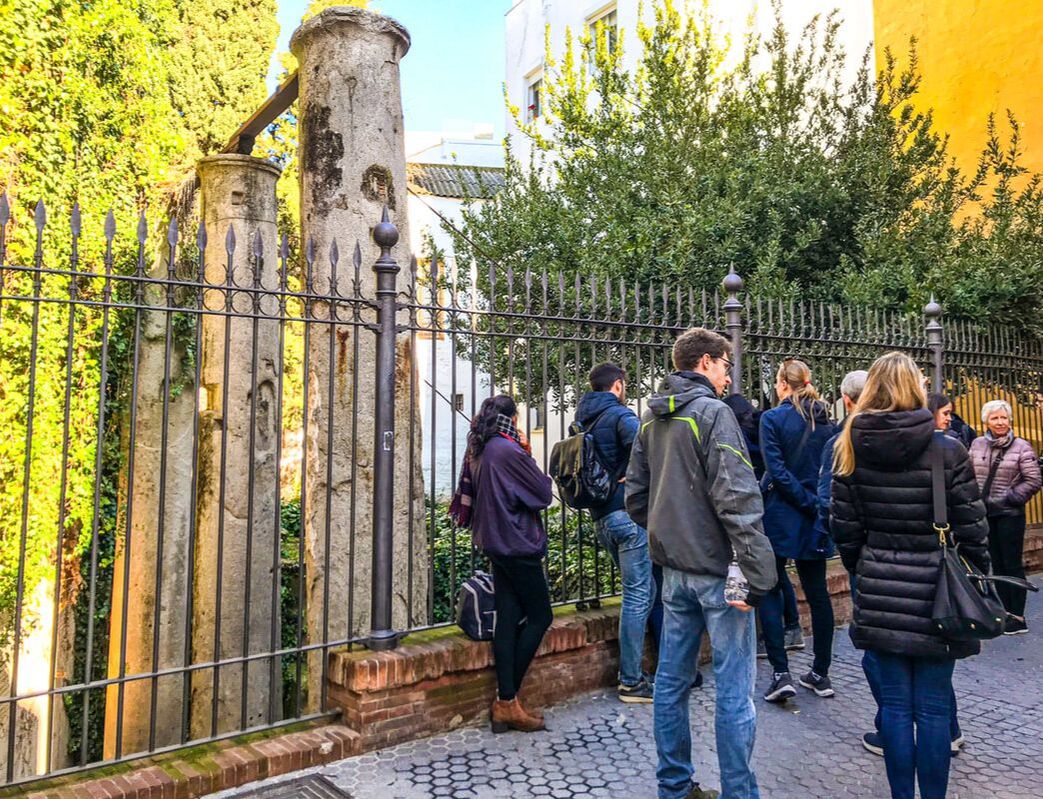 When I went to Calle Mármoles today for a shot of the columns, I found this tour listening to a guide telling absolute whoppers about how the column was broken in transit to the Alcazar (Seville's Royal Palace) instead of the Alameda. But of course, when it comes to legends, who can be sure what's true? A Crocodile Was Sent to Woo a Spanish Princess. In 1260 the Sultan of Egypt sent a delegation laden with exotic gifts to ask for the hand of Princess Berenguela, King Alfonso X’s daughter. The gifts included a live crocodile, a domesticated giraffe, an elephant tusk, and a wizard’s wand. (I know, right? And nowadays guys get away with bringing us flowers and chocolates!) The king rejected the proposal but kept the gifts; the crocodile thrilled the populace for years. When the beast had breathed its last, the king had its body stuffed and hung up in the cathedral along with the tusk, the wand, and the giraffe’s bridle bit. When the crocodile’s body eventually crumbled, a wooden replica was hung in its place, where it remains today, on the ceiling by the exit onto the Patio de los Naranjos (Patio of the Orange Trees). Pedro the Cruel Nailed His Own Head to the Wall. One dark night in the fourteenth century, young King Pedro the Cruel (known to his friends as “the Just”) was waylaid on a back street in my very neighborhood. The clash of swords caused an old woman to lean out an upstairs window. She didn’t see the king or his fatal thrust, but as he tiptoed away from his attacker’s corpse, she heard the telltale squeak of his knee from an old injury, a sound known to everyone in the city. The dead man’s family showed up at the palace demanding the killer be found and brought to justice. The king, thinking no one knew the truth, promised a reward — which the old woman’s son came to claim. He took the king aside, pretending to point out the window, but actually pointing to a small mirror. The king rewarded him and announced that the next day the killer’s head would be nailed to the wall at the scene of the crime. (This was before we had all those pesky laws about due process, evidentiary hearings, etc.) Naturally everyone in the city showed up, agog to know whodunnit. The king arrived with a large box containing, he said, the killer’s head; the identity would remain a secret to avoid sparking a blood feud. The box was nailed to the wall, secured with iron bands, and kept under guard day and night. Years later, when his enemies finally bumped Pedro off, they immediately opened the box. Inside, they found a marble bust of Pedro’s head. It’s still on that wall (without the box) on Calle Cabeza del Rey Don Pedro (Head of King Pedro Street). Doña María Coronel’s Body is Miraculously Preserved. Actually, her corpse is not so much preserved as mummified. And it’s probably just as well that we can’t see her features too clearly, as she was famously disfigured in a gruesome encounter with our old friend, Pedro the Cruel. Infatuated with her beauty, he chased her all over the city for months. When he finally cornered her in the kitchen of a convent (brace yourself, this bit’s ghastly) she dashed a pan of boiling oil in her own face to make herself unattractive to her pursuer. Incredibly she not only survived but went on the found the Santa Inéz Convent and lived to the age of 77. Her distinctly creepy remains are occasionally put on display at the convent on Calle Doña María Cornel Street. They Killed the Mother of the Bull that Gored Manolete. “And this is Islera,” said my guide on the bullring tour, with the profound loathing usually reserved for mentioning Hitler or Vlad the Impaler. “The bull that killed the great bullfighter Manolete in 1947. Islera was, of course, killed. And afterwards, they went and found his mother and killed her too, so that she never again produced another murderer.” Now does that seem sporting? A Murder Inspired the “Puppy” Statue of Jesus. "This statue was modeled after the gypsy El Cachorro," a Spanish friend told me. El Cachorro means Puppy and may have referred to the man's reputation as a bit of a hound dog. He was coming home from a tryst with a noble lady when he was murdered on the Isabel II Bridge by her husband. Some claim the woman’s lover was really El Cachorro’s bastard brother, and it was all a terrible mistake. Be that as it may, sculptor Francisco Ruiz de Gijón happened to be on the scene, roaming the city in search of inspiration for the statue of Christ he’d been commissioned to carve. Seeing El Cahcorro breathe his last, the sculptor knew he had found the perfect image. “Expiring Christ,” better known as “El Cachorro,” is one of the highlights of Holy Week processions. In the off season, it can be viewed in the Basílica del Cristo de la Expiración on Calle Castilla in Triana. I don’t know about you, but I find all of these tales completely plausible and don’t doubt for a minute that every detail is accurate. But even if I didn’t, I’d love the drama they add to the streets, bridges, and buildings that make up the landscape of my life. One man collected many of these tales into a book, but when I showed it to a Spanish friend, she sniffed. “Well, I wouldn’t trust a word he says. Everyone knows he’s the biggest liar in town.” Hmmm, I sense another legend right there in the making. I’ll keep you posted. Thirty-three years ago Rich and I inconvenienced our nearest and dearest by getting married two days after Christmas, requiring them to make all sorts of awkward travel arrangements just when everyone really wanted to be home by the fire playing with their new toys. Ever since then, our anniversary has been squeezed into a social calendar revolving around Yuletide celebrations, New Year’s Eve, and Spain's grand finale on January 6: Three Kings Day, which in Seville involves a spectacular parade as a prelude to exchanging gifts. In the midst of so much revelry, our anniversary celebrations tend to be modest. Researching traditional gifts, I discovered the US and UK don’t even list anything for the 33rd anniversary; apparently so few hit that benchmark nobody could be bothered. Spain, Italy, and Germany observe the occasion with tin, which didn’t help. A can of tuna? A couple of Budweisers? A tin cup? One website suggested a spiritual-themed gift. Why? “33 is an important religious number; it’s the numerical equivalent of AMEN, i.e., 1+13+5+14=33; it’s the age of Christ and also the number of miracles that he performed and it’s also the numerical representation of the star of David.” Sorry, still not inspired. A tin crucifix somehow didn't strike the right note. Luckily Rich had a better idea: a train trip to Valencia on Spain’s east coast. He found a trendy yet cozy hotel called Maria Berger, which on arrival we learned had just opened the day before. As you can imagine, everything was sparkling clean and I could probably have eaten off of any surface in the room, including the TV remote control (although I did not put this to the test). When Rich mentioned we were celebrating our anniversary, the desk clerk immediately sent a bottle of cava to our room. “I could get used to this,” I said. As it happened, Valencia’s Fine Arts Museum was having an exhibition of one of my favorite painters, Joaquín Sorolla. A hundred and twenty years ago he was breaking all the rules by painting everyday subjects in this fluid, colorful style: That one wasn’t in the exhibition, but lots of wonderful works were, and I was ambling around admiring Sarolla’s brushwork when this one stopped me in my tracks. The painting isn’t all that remarkable, but the subject was the stuff of family legend. When I was a teenager, my Aunt Beverly stunned everyone by packing up her family and moving to Valencia, Spain. Her letters home were eagerly anticipated and read aloud; everything, including cooking a holiday dinner, became an epic drama. For instance, when she wanted to serve a roast turkey, Aunt Beverly consulted the girls from the village who helped her around the house. They said they knew where to get one and returned the next day — with a living bird. My aunt, whose softhearted attitude to animals made St. Francis of Assisi look like Cruella de Vil, instantly bonded with the turkey and refused to consider cooking and eating her new pal. An uproar naturally ensued. The family demanded their dinner. Aunt Beverly stood firm. Eventually, as it was five forceful personalities to one, she gave in — but she refused to participate directly. Standing outside the kitchen door, she called out instructions for stuffing and roasting the creature, all the while weeping for its fate. I’m not sure, but that may have been the year she became a vegetarian for life. The story took its place in our family lore, and I suspect the villagers are still telling the tale of the crazy American who didn’t want to eat a turkey because it was her amigo. Seeing Aunt Beverly’s legendary Spanish turkey in a Sarolla painting wasn’t the only astonishing discovery of the trip. Although I had visited Valencia twice in the past, somehow it had escaped my notice that its cathedral housed the Holy Grail — yes, the actual cup used during the Last Supper. Some naysayers question the authenticity of Valencia's Grail, pointing to the 200 other claimants to the title scattered across the globe. But this one has better credentials than most, being very old and very simple, made of carved agate polished with myrrh —a carpenter’s cup. Of course, no records exists of its early years; all we really know is that it was taken from the Holy Land, passed on to the Pope in Rome, and later given to Spanish royalty for safekeeping in turbulent times. Is this the real deal? Every Catholic church contains holy relics, sacred remnants of saints’ bodies or personal possessions, which the faithful believe can work miracles. In medieval times high-profile relics were sold for fabulous sums, and not surprisingly, many have now turned out to be very dubious indeed. I’m no expert, but having seen the right hand of John the Baptist in Istanbul’s Topkapi Palace, I had to wonder how his right hand could also be on display in the Serbian Orthodox Cetinje Monastery in Montenegro and the Romanian Monastery of the Forerunner. In other news, John the Baptist's six heads are displayed in the Umayyad Mosque in Damascus, San Silvestro in Capite in Rome, the Residenz Museum in Munich, Amiens Cathedral in France, Antioch, Turkey, and in a parish church in Tenterden, Kent. How many skulls and right hands can one man have? 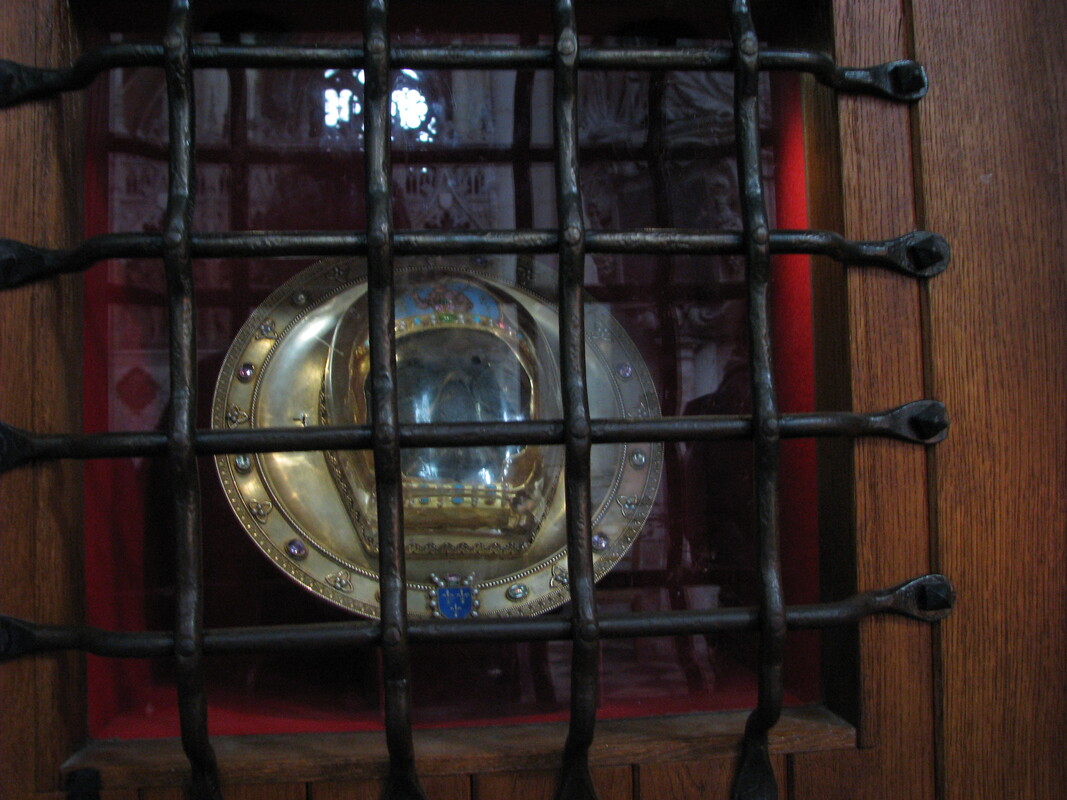 Amiens Cathedral displays the actual skull of John the Baptist — or does it? In the famous Bible story, Herod's stepdaughter demanded John's head on a platter. But we know this isn't the actual platter because that's in Genoa's cathedral — or maybe not. Thanks to Wikicommons' Wi1234 for this picture. No one will ever be able to prove the cup in Valencia is — or isn’t — the genuine Holy Grail. But the sight of such a revered object makes even the most time-pressed tourist slow down and fall into respectful silence, while confirmed skeptics like myself pause to consider the nature of truth. In the end, I’m not sure how much its authenticity really matters. For the faithful of Valencia, possession of this treasure is a miracle in itself, and to be in its presence is to be touched by glory. Growing up Catholic, I accepted saints and relics and miracles as part of everyday life. And while time, experience, and John the Baptist's six heads have made me question everything I was told as a child, I understand that the universe is entirely too big and complicated for me to define the limits of its possibilities. Sometimes, as the nuns used to tell us, you just have to live with the mystery. One thing I do know for certain: the excursion to Valencia was a wonderful way to celebrate our 33rd anniversary. Perhaps that website’s suggestion of a spiritual-themed gift wasn’t so far off the mark after all. Our time in Valencia made me laugh, and think, and contemplate the nature of reality. And I think we can all agree, that’s a lot better gift than a can of tuna or a tin cup. YOU MIGHT ALSO ENJOY One of the oddest aspects of being a blogger is that strangers meeting my husband for the first time tend to say things like, “I feel I know you already, and I really share your love of duct tape and ice cream.” If you're new to my blog, don't be alarmed, I’m not revealing some sort of kinky sexual fetish, these just happen to be things Rich considers indispensable for civilized journeys. Having spent a lifetime studying the art of adventure, he always has some new nugget of practical advice up one sleeve and an outlandish travel idea up the other. Moving to Spain, luggage-free vacations, an Albanian restaurant where your lunch is delivered on horseback — I never know what he’s going to spring on me at the breakfast table. Are these random brainstorms or is there an underlying logic, however quirky, to his madness? I decided to ask the man himself. Karen: When I first met you, my idea of a big vacation was a week at the beach. Now we’re galivanting all over the world, most recently on our five-month Mediterranean Comfort Food Tour of 2019. Why are you so addicted to long-term travel? Rich: I need a sense of adventure in my life. Actress Regina King likes to say, “Your comfort zone is where dreams go to die.” Travel is all about dreaming up new possibilities and looking forward to the future. Karen: It took you twenty years to convince me to try luggage-free travel. And OK, I’ll admit it’s fun — once in a while, for short jaunts. What sparked your obsession with this crazy form of travel? Rich: First, because nobody thinks you can do it. But mainly, I like luggage-free travel because it gives a great amount of freedom — freedom from worry about where the bags are, how you’re going to transport them, what you’re going to wear tomorrow. These days a lot of us are embracing a more minimalist approach to life. Luggage-free travel is the ultimate minimalist way to go. Karen: Travel writer Pico Iyer said, “Serendipity was my tour guide, assisted by caprice.” And that’s you all over. You’re an incredibly organized person yet you hate advance planning when we're on the road. Rich: Too much advance planning locks you in; it kills spontaneity. Some people think that not having lined up a whole series of advance reservations would make you more uptight, when — for me at least — the reverse is true; it makes me more relaxed. If I like a place, I can stay longer; if I don't, I get to move on. I’ve never come into a town where I couldn’t find a place to stay — even hot tourist destinations at the height of the season. And when you’re flexible, you walk into things you had never anticipated. As you know, some of our best stories come from unplanned excursions and last-minute detours. Karen: You turned 75 this summer while we were in Thessaloniki, Greece. Did that inspire any profound thoughts about life or travel? Rich: I still want ice cream on my birthday. Karen: Obviously, that’s a given. And I always make sure you get it! Rich: Aside from that, has age changed the way I travel? Yes, to some extent. I still need a sense of adventure; mentally it challenges me to stay sharp and pay attention. Recently I have become more aware of my physical limitations. Heat gets to me more, so I try not to go out at the hottest time of day — which made extra sense last year, during the most sizzling summer in Europe’s history. I no longer climb mountains, volcanos, the highest castle parapets, or the towers of cathedrals. I did walk 750 miles during our five month trip, about five miles most days, which is still pretty easy for me. And I do a half hour of yoga every day. Karen: When we got back, everyone seemed astonished that we’d spent five months eating our way around the Mediterranean rim but somehow failed to gain any weight. Rich: Mostly that was the walking and the yoga. And the fact that we told everybody up front that we were light eaters; people respected that. When we were filming someone making incredibly rich food — that moussaka in Thessaloniki comes to mind — afterwards we split a portion. Which, as you will recall, was more than enough! Karen: I can’t tell you how many people have said to me, “I couldn’t travel with my spouse for more than a week without wanting to kill them.” Any advice for those folks about how to get along on the road? Rich: I believe the key is to stay flexible. Remember you’re both in unfamiliar territory and doing the best you can. Talk stuff out. Be courteous. And be very forgiving if the other person has a bad day or a meltdown. Not that you would ever do that, Karen. Karen: Me? Of course not. But speaking hypothetically … ? Rich: One time when I was skiing, I watched a couple having this huge fight, and he ended up throwing her skis over the railing of the outdoor bar at the ski lodge. I kept thinking, “What are you actually accomplishing? In what way is throwing her skis over the railing going to resolve your issues? You think that’s going to de-pressurize the situation? Show a little common sense!” Karen: Any big ideas for travel in 2020? Rich: I've had this thought rattling around in my head: anybody can go to France, Italy, or Spain. But what about those experimental micro-countries that were born from some outlandish philosophy, flourished for a brief, shining moment, and disappeared into oblivion. Like the Republike Peščenice, created twenty years ago in a suburb of Zagreb, Croatia by irreverent comedian željko Malnar. Last August we were lucky enough to meet one of his compatriots in the car wash that served as the mini-nation's capital. There are dozens of lost countries like this all over the world. Why not visit them and see if we could become ambassadors? Karen: If I’ve learned anything in 33 years of marriage, it’s that Kurt Vonnegut was right when he said, “Peculiar travel suggestions are dancing lessons from God.” I think these dancing lessons occur all the time, wherever we are, whatever we're doing — and we’re wise to be on the alert so these transcendent moments don't slip by unnoticed. To quote Kurt Vonnegut again: “So when we were drinking lemonade under an apple tree in the summer, say, and talking lazily about this and that, almost buzzing like honeybees, Uncle Alex would suddenly interrupt the agreeable blather to exclaim, If this isn’t nice, I don’t know what is. So I do the same now, and so do my kids and grandkids. And I urge you to please notice when you are happy, and exclaim or murmur or think at some point, If this isn’t nice, I don’t know what is.” YOU MIGHT ALSO ENJOY |
This blog is a promotion-free zone.
As my regular readers know, I never get free or discounted goods or services for mentioning anything on this blog (or anywhere else). I only write about things I find interesting and/or useful. I'm an American travel writer living in California and Seville, Spain. I travel the world seeking eccentric people, quirky places, and outrageously delicious food so I can have the fun of writing about them here.
My current project is OUT TO LUNCH IN SAN FRANCISCO. Don't miss out! SIGN UP HERE to be notified when I publish new posts. Planning a trip?
Use the search box below to find out about other places I've written about. Winner of the 2023 Firebird Book Award for Travel
#1 Amazon Bestseller in Tourist Destinations, Travel Tips, Gastronomy Essays, and Senior Travel
BLOG ARCHIVES
July 2024
CATEGORIES
All
|
